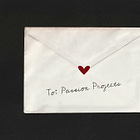On Balancing Personal Style + Client Needs
Yes, you can do both. Here’s how I’ve learned to navigate it.
One question I get a lot from aspiring creatives is,
“How do you keep your personal style while still hitting what the client needs?”
And I won’t sugarcoat it… sometimes it’s hard.
When someone already has a vision in their head and wants it matched perfectly, there’s often little wiggle room to incorporate your style into the work.
But the best part of having a portfolio—or any kind of online presence—is that potential clients usually already have a sense of your style and capabilities. They’re coming to you for exactly that.
That’s why it’s so important to be intentional about the projects you choose to share. Post the things you loved working on, or at the very least, the things you’d want to keep doing. Then narrow that down even further for your portfolio.
I still don’t believe you need to completely niche down, but I do think it’s important to highlight the types of work you’re excited about. It’s always obvious when someone was passionate about a project, whether it’s the industry, medium, or concept, and people pick up on that energy.
More on that below…
In case you ever find yourself in a situation where a client isn’t familiar with your taste or style, here are a few things I do to balance my design perspective with client needs:
1. Know the why, do the research, and get ready to sell.
One of the reasons the discovery + research part of the process is so important is that it helps you really understand what the client is trying to accomplish. When kicking off a project, I want to know their goals, what’s been done before, any competitor research, and I’ll even dig into archives to uncover the essence of their brand or company.
Once I’ve compiled everything and feel grounded in the direction, I usually present a few concepts:
– One that’s a bit out-of-the-box
– Another that’s still creative but a little safer
I’ve had clients choose both approaches, or even combine them. Sometimes we land on something that’s grounded but has a bold twist.
The biggest key here is being able to sell your ideas.
You can have the best concept in the world, but if you can’t pitch it with confidence and clarity, it might not land.
Step into their shoes. Explain the thinking behind your choices in a way that’s not too technical, but still clearly connected to the strategy and research. When clients understand the work that went into the ideas, it’s a lot easier to get buy-in.
2. Think of your style as a lens, not a limitation.
It’s easy to feel boxed in by your style, or worse, stuck in projects where you can’t express your creativity in a way that feels aligned.
But when you shift your mindset, you can start thinking of your style as a lens, a way to interpret and elevate the client’s vision. There are always subtle things that make your work yours, even if you don’t fully realize it. Your style doesn’t need to overpower the work—it can simply guide it.
3. See the process as a collaboration, rather than competition
You and the client are on the same team, it’s not you vs. them.
When you treat the process as a collaboration, explain your ideas clearly, and genuinely listen to their needs, it shows. They bring their values, objectives, and target audience; you bring storytelling, visual strategy, and creative interpretation. The sweet spot is where those meet.
4. Use personal projects to showcase your style
Let’s be real, not every client project is going to be a dream job. That’s where personal projects come in.
They’re a great way to feed your creative identity and stretch yourself without limits.
Dream of working on magazines (like me)? Make your own!
Want to get into editorial illustration? Try a prompt generator (there are tons online already) or invent your own briefs to experiment with.
Passion projects have saved me during creative ruts, helped me try new skills, and honestly just kept things fun. And often? That work becomes the thing that attracts your dream clients.
I wrote more on this and you can check it out below.
You can now contribute to Studio Notes’ growth without strings attached! If you can’t commit to a monthly or annual subscription but would still like to support, you can offer me a symbolic coffee below.
Sometimes it’s tough to find a balance between your style and a client’s vision, and that’s okay.
There’s something freeing about being willing to say no. Setting boundaries protects you from burnout and makes sure you’re working with people who actually get you.
And that’s why we got into this business in the first place, right? To do meaningful work, stay creatively fulfilled, and connect with people who value what we bring to the table.
Until next time,
Bailey







